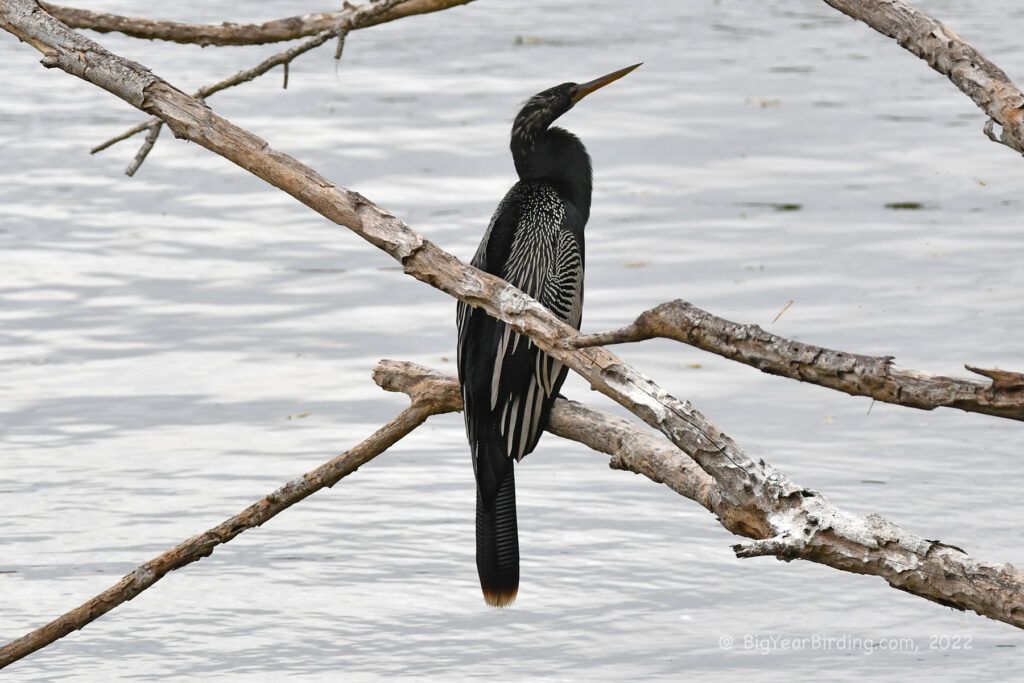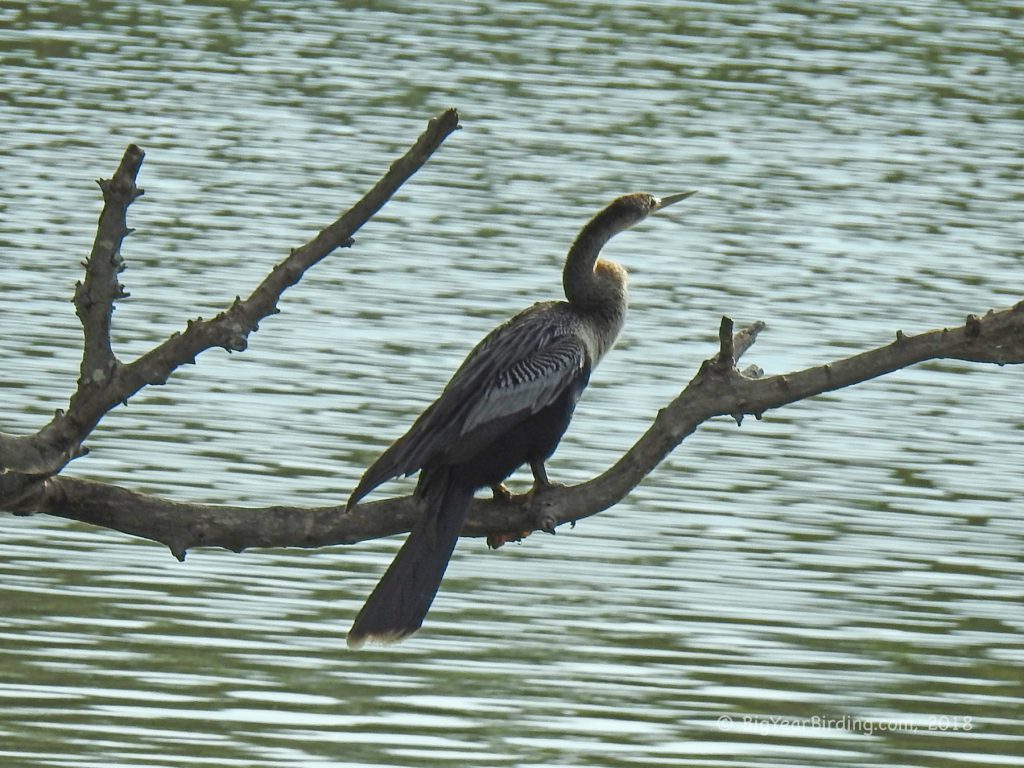
The Anhinga, also known as the Snakebird or Darter, is a large aquatic bird found in the Americas. These birds are approximately 35-37 inches in length with a wingspan of 42-45 inches. They typically weigh between 2.2-4.4 pounds, with males being slightly larger than females.

One of the distinguishing field marks of the Anhinga is its long, slender neck and dagger-like bill. They also have dark feathers with a distinctive pattern of white spots on their wings, and their tails are fan-shaped. In flight, they appear to glide with their wings outstretched, often flying low over the water’s surface.
Anhingas are found throughout the southeastern United States, Central America, and South America. They prefer freshwater habitats such as swamps, marshes, and slow-moving rivers. During the breeding season, they form large communal nesting colonies near the water’s edge.
While Anhingas are not migratory birds, they may move short distances in response to changing weather patterns or food availability. During the winter months, they can be found in warmer regions of their range.
Anhingas are expert fishermen, using their sharp bills to spear fish underwater. After capturing their prey, they often perch on a branch or log to dry their wings, as their feathers are not completely waterproof. This behavior, along with their snake-like appearance, has earned them the nickname “Snakebird.”
Overall, the Anhinga is a unique and fascinating bird that is well-adapted to life in and around the water. Their distinctive appearance and impressive fishing skills make them a favorite among birdwatchers and nature enthusiasts alike.
